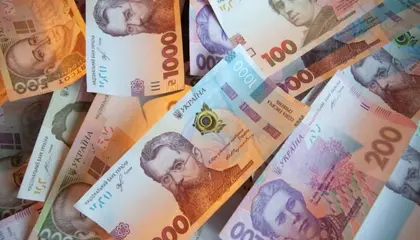The International Monetary Fund (IMF) reached an agreement last week to provide a $15.6 billion loan to Ukraine, making it the first country at war to receive financing in the 77-year history of the Washington-based lender.
The lending program is scheduled to last until 2027 and still requires approval from the IMF board which is expected in the coming week or two.
Ukraine’s war-battered economy, stemming from Russia’s full-scale invasion last year, faces a current negative current account balance of $3.25 billion, the lender says on its website.
The program envisions “a set of macroeconomic and financial policies to support the economic recovery of Ukraine,” Ukraine’s Finance Ministry said on March 22.
“The program will help to mobilize financing from Ukraine’s international partners, as well as to maintain macro-financial stability and ensure the path to post-war reconstruction after Ukrainian victory in the war against the aggressor,” the statement added.
Bloomberg reported a few days later that Ukraine’s group of creditors had given “assurances to support approval” of the loan.
The European Union is Ukraine’s largest creditor with $31 billion worth of loans as of January 1, comprising an estimated 25 percent of the overall debt burden, Kyiv-based Dragon Capital said in a daily note to investors.
However, the EU is not expected to participate in any debt restructuring.

New Year: Changes for Economy, Business and Citizens
In Washington, U.S. Treasury Secretary Janet Yellen welcomed the clinched deal.
“An ambitious and appropriately conditioned IMF program is critical to underpin Ukraine’s reform efforts, including to strengthen good governance and address risks of corruption, and provide much-needed financial support,” she said, as reported by the Financial Times.
Since the Kremlin’s onslaught of February 2022, Ukraine saw whole industrial and commercial enterprises destroyed or seized by invading forces. A grain blockade was installed, leading to worldwide food inflation. A grain maritime shipping corridor now exists for the export of Ukrainian grain brokered by Turkey but operates with delays.
Last year, Kyiv witnessed gross domestic product – an indicator of a country’s economic output – plunge by more than 30 percent, according to Economy Ministry data.
To stay afloat, Ukraine has relied on selling bonds, loans and grants from foreign donors and lenders.
The U.S. has provided the most with $48 billion, the majority of which in the form of military and humanitarian aid, a Rand Corporation blog said on March 7.
The damage to infrastructure and the economy Russia has caused has been astronomical.
As of March 24, the estimated cost of infrastructural damage is $63 billion, the Kyiv School of Economics said.
And the World Bank on March 22 said that the estimated cost of rebuilding Ukraine currently stands at $411 billion, up from its previous estimate of $349 billion in September.
In the vital agricultural industry, one of the top three contributors to GDP, 5 million hectares, or 50,000 square kilometers, of arable can no longer be cultivated due to the danger of mines and contamination, said Oleksandr Haidu, who chairs the parliamentary committee on agriculture.
Ukraine’s economy this year could rise by 0.5 percent to reach $158 billion in monetary terms, Dragon Capital forecasts.
You can also highlight the text and press Ctrl + Enter






